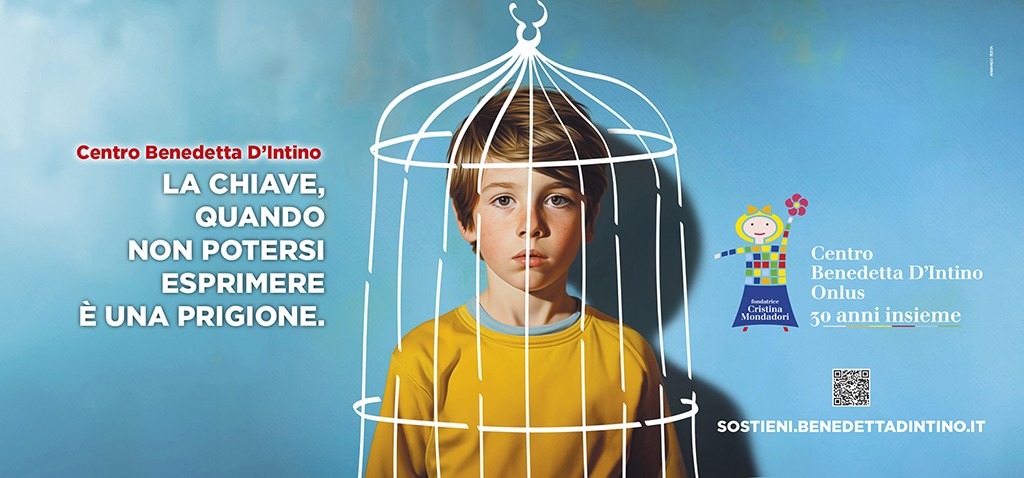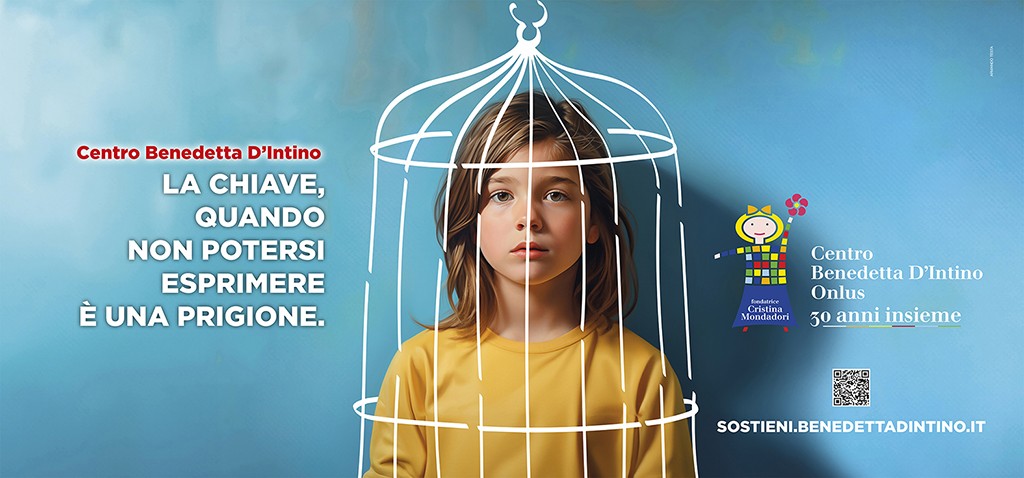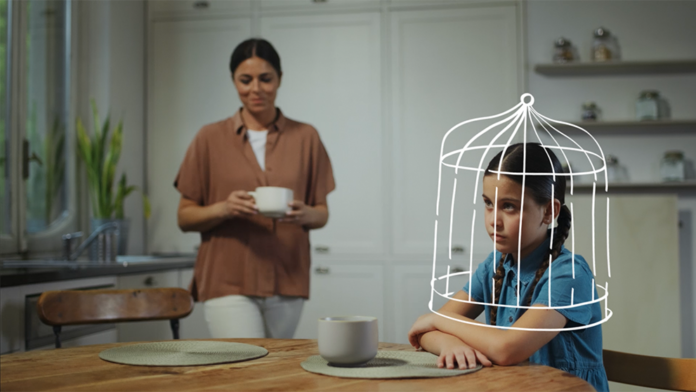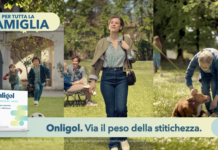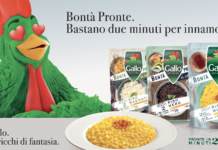The Benedetta D’Intino Centre was founded in 1994 from the dream of Cristina Mondadori in memory of her granddaughter Benedetta. The goal of the centre is to provide assistance for children with serious communication disabilities and suffering psychological distress, by trying to improve their lives and their families’ lives.
This year, on the occasion of its thirtieth anniversary, it has tasked Armando Testa with developing an awareness campaign focused on the clinical practice used by the team of doctors and professionals in the Centre with children who cannot express themselves using their voice: Augmentative Alternative Communication.
“We asked Armando Testa to help us on a journey that could publicise and promote the work of the Centre, making this difficult topic as clear and accessible as possible, because it is not easy to understand just what communicative disability is, and the reality experienced by those who have to face it, and so what Augmentative Alternative Communication represents for the lives of the children we care for and for their parents.” These are the words of Mattia Formenton, President of the Benedetta D’Intino Foundation.
The agency’s response came by listening to interviews with families, listening to the doctors and managers of the Centre, trying to imagine the unimaginable, and working in synthesis to find an immediate and memorable symbol that could bring the world of those children closer to the world of those who can help by supporting the work of the Centre.
That how the “Gabbie” campaign came to life. Developed for TV with 30″ ads, print, outdoor, digital and social, it has been running since 23 June with a preview on 17 June during the event organized by the Benedetta D’Intino Centre at the Theatre Franco Parenti in Milan.
A child who cannot express himself/herself, who can’t say – neither with words nor with body language – mum, I’m hungry, I’m happy, it hurts, is not a child who doesn’t have thoughts, emotions, fears, dreams, he/she just doesn’t know how to get them out, they’re not able to. This disability keeps the kid locked in a prison of incommunicability from which it seems impossible to escape. The work of the Centre, and the AAC, represent a key that can finally open that cage, for the first time liberating thoughts and reactions that sometimes not even the parents themselves might have imagined existed.
The three subjects for print, outdoor and digital formats have great visual impact, with three portraits of children – created with AI – symbolically imprisoned in a cage that is not real but outlined in white. The film was produced by AT Studios and directed by Augusto Storero, and it chooses an emotional journey, inviting us to imagine the lives of lots of kids – in their bedrooms, in the park, in the kitchen with their mother – and trying to summarize the complex universe of Augmentative Alternative Communication, revealing that for each of them children finally being able to express themselves is really living. And as the lines designing the cage open up, they are transformed into a poetic flight of butterflies, while the notes and words of Abbi cura di me, the beautiful song by Simone Cristicchi, accompany the images of the film.
“Abbi cura di me (Take care of me) are the words of Michela Sartorio and Monica Pirocca, the creative directors in Armando Testa who devised the campaign – it was also the principle that moved us from our first meeting with the President and the managers of the Centre. Taking care of everything we were listening to, and what we would read and take a deep dive into later – this was the only way for us tackle a world that was so difficult to imagine, but which we had to make accessible to reach as many people as possible. The balance for this type of campaign is so delicate, you need impact to be seen and to stimulate a reaction, but you also need respect and delicacy to avoid the risk of upsetting or worse offending those who suffer every day. The Gabbie campaign was created from the awareness of having to take care of that balance between “punch” and grace. For example, we chose not to have realistic metal cages, but to work more symbolically with an illustrated line. And it was the people at the Centre who told us that we were on the right road – the people who work there and even some parents – who got so excited when they saw the film for the first time.”
Armando Testa, who has always been very sensitive to social campaigns, demonstrated by their long tradition in non-profit campaigns, offered their contribution pro bono to support the important work of the Benedetta D’Intino Centre.
And anyone who wants to help can go to www.sostieni.benedettadintino.it or scan the QR code on the subjects of the campaign. Even a small donation helps: when each of those cages opens, becoming a butterfly, a child’s life changes forever.
Credits
Creative Direction: Monica Pirocca and Michela Sartorio
Project Manager: Carolina Testa
Client Service: Sascha Van Der Plas
Production Company: Armando Testa Studios
Director: Augusto Storero
Animation: Studio Magoga
Music: Abbi cura di me, Simone Cristicchi


